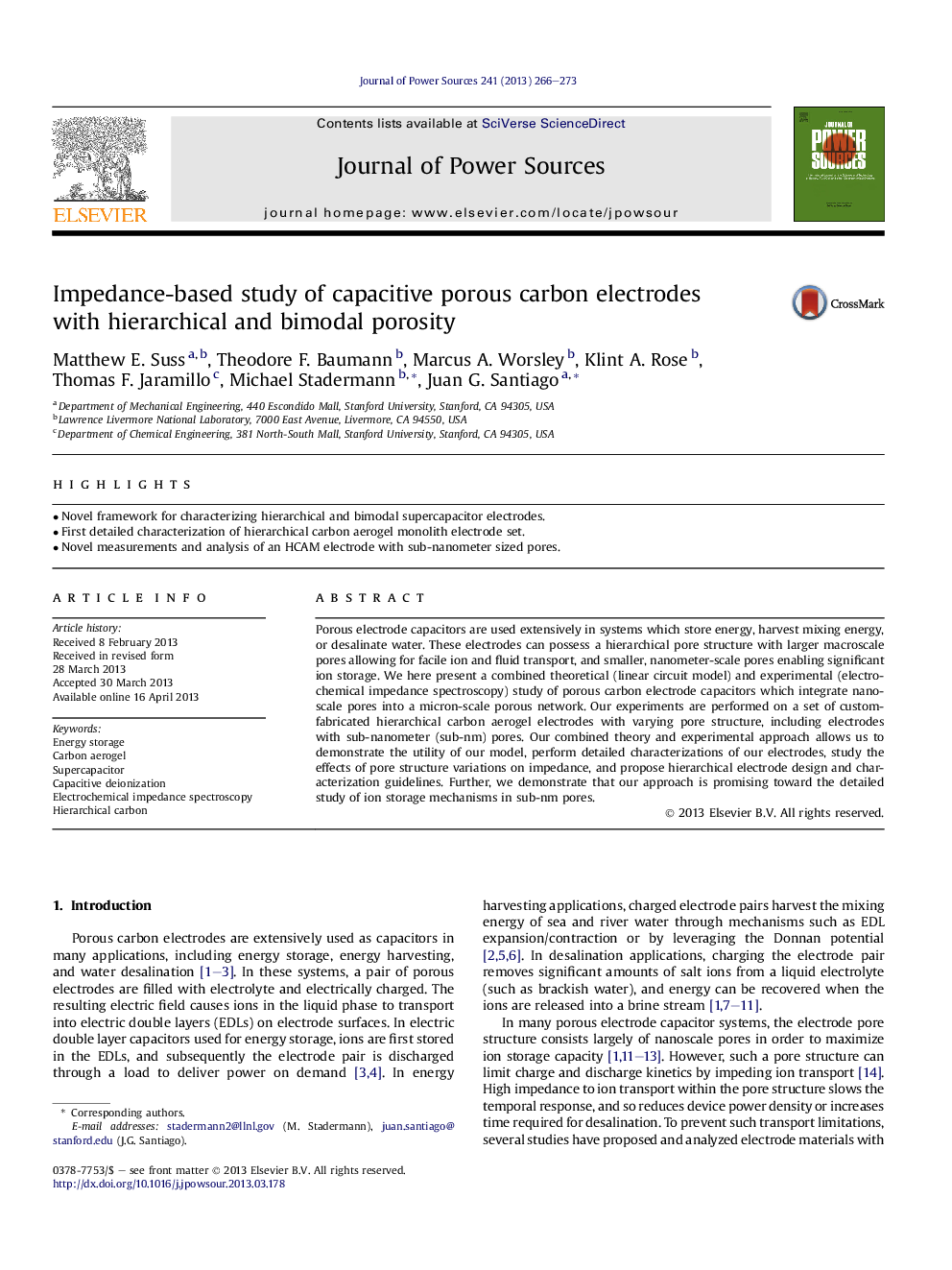| Article ID | Journal | Published Year | Pages | File Type |
|---|---|---|---|---|
| 7740912 | Journal of Power Sources | 2013 | 8 Pages |
Abstract
Porous electrode capacitors are used extensively in systems which store energy, harvest mixing energy, or desalinate water. These electrodes can possess a hierarchical pore structure with larger macroscale pores allowing for facile ion and fluid transport, and smaller, nanometer-scale pores enabling significant ion storage. We here present a combined theoretical (linear circuit model) and experimental (electrochemical impedance spectroscopy) study of porous carbon electrode capacitors which integrate nanoscale pores into a micron-scale porous network. Our experiments are performed on a set of custom-fabricated hierarchical carbon aerogel electrodes with varying pore structure, including electrodes with sub-nanometer (sub-nm) pores. Our combined theory and experimental approach allows us to demonstrate the utility of our model, perform detailed characterizations of our electrodes, study the effects of pore structure variations on impedance, and propose hierarchical electrode design and characterization guidelines. Further, we demonstrate that our approach is promising toward the detailed study of ion storage mechanisms in sub-nm pores.
Keywords
Related Topics
Physical Sciences and Engineering
Chemistry
Electrochemistry
Authors
Matthew E. Suss, Theodore F. Baumann, Marcus A. Worsley, Klint A. Rose, Thomas F. Jaramillo, Michael Stadermann, Juan G. Santiago,
